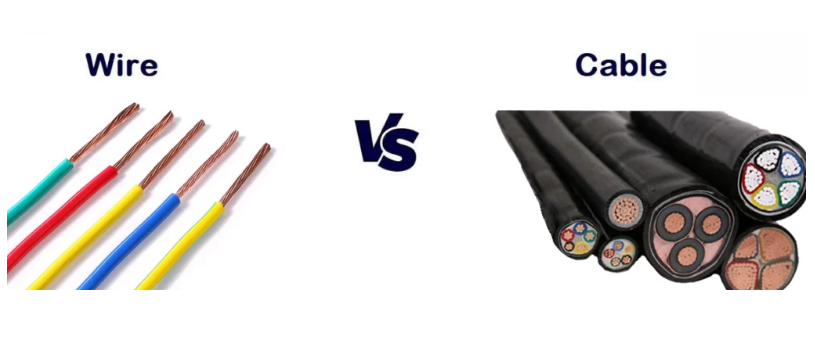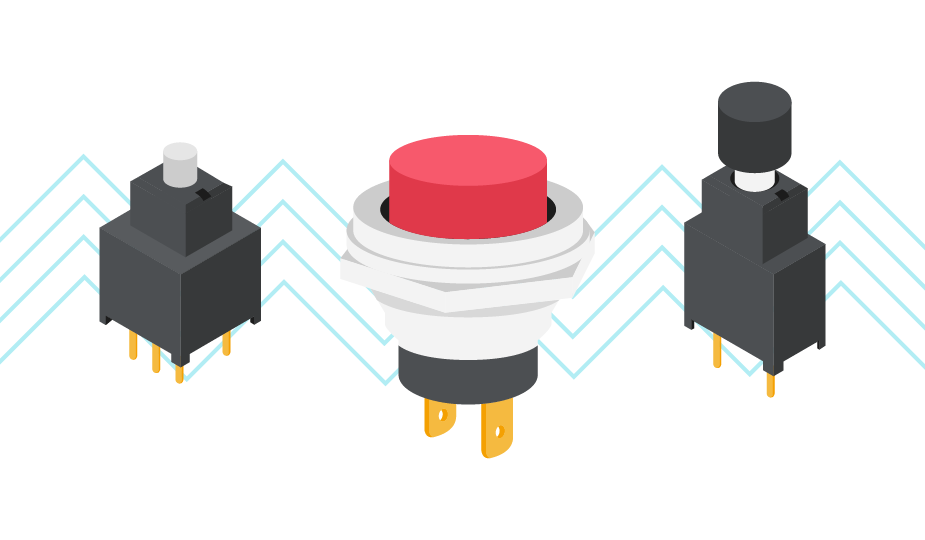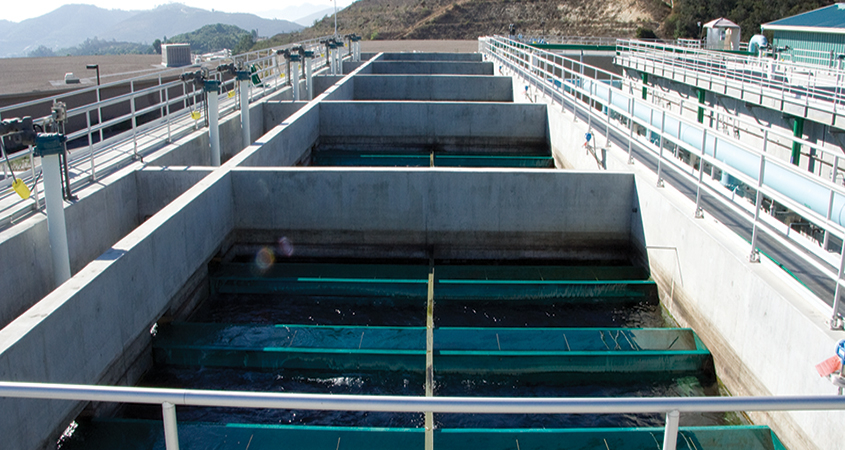Abstraction: This article will introduce MCCB types from different aspects such as features, current, installation, and so on.
MCCB types – Sorted by trip curves and magnetic characteristics
Based on the provided MCCB (Molded Case Circuit Breaker) types, these types are classified by trip curves and magnetic characteristics. H Each type is explained in depth below:
Type B MCCB
Type B MCCB is suitable for circuits with momentary overloads and is typically used to protect general-purpose electrical equipment and circuits. Its magnetic and time-current characteristics make it suitable for addressing momentary overloads in certain loads but may not be as suitable for handling high starting currents or motor inrush currents.
Type C MCCB
Type C MCCB has higher magnetic characteristics compared to Type B and is used in circuits that require higher momentary overload protection. It is typically used for equipment like motors that have higher inrush currents during startup. C-type MCCB is suitable for loads of this type.
Type D MCCB
Type D MCCB has even higher magnetic characteristics and is designed to address loads with high inrush currents, such as powerful motors. This type of MCCB can provide a higher level of momentary overload protection to accommodate the high currents generated during startup.
Type Z MCCB
Type Z MCCB has lower magnetic characteristics and is usually used in circuits that do not require momentary overload protection, such as electronic equipment. It offers lower momentary short-circuit protection but may trip during prolonged overloads.
Type K MCCB
Type K MCCB has extremely high magnetic characteristics and is used for additional protection, such as hydraulic-magnetic switches. It provides a very high level of momentary overload protection.
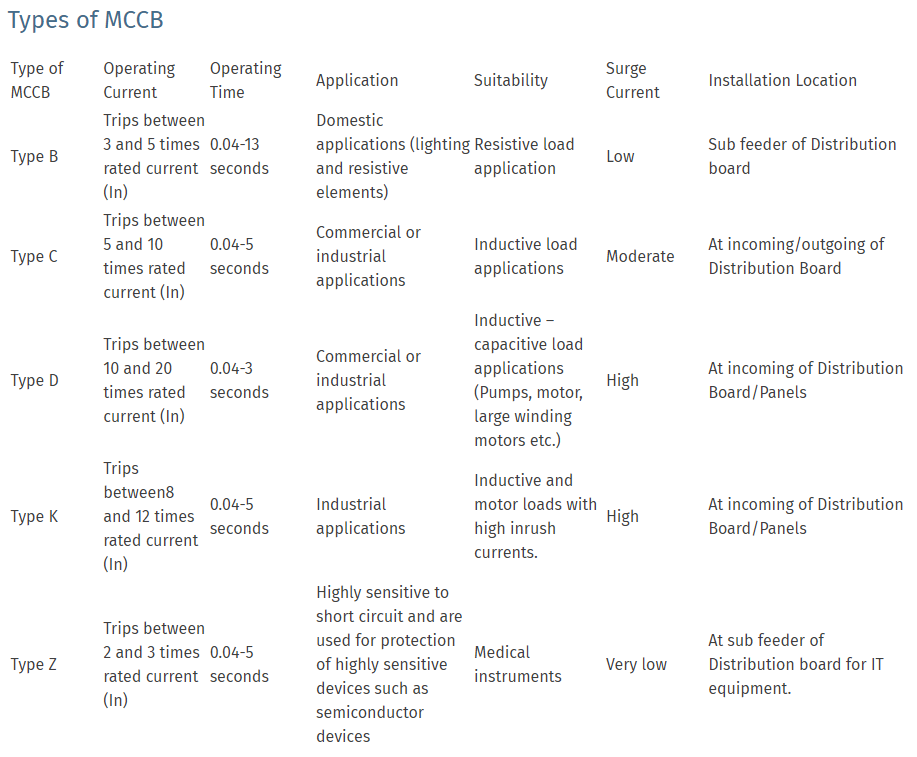
MCCB types – Based on the installation type and performance characteristics
Based on the installation type and performance characteristics, MCCBs (Molded Case Circuit Breakers) can be classified into different types. Here is a detailed explanation of these different types:
Plug In Type MCCB
Plug-in Type MCCB is a type of circuit breaker that is easy to install and replace. It is typically designed to be plugged in and out like a plug, allowing it to be mounted in distribution panels or cabinets. This type of MCCB offers ease of maintenance, enabling users to quickly replace the circuit breaker without disconnecting the wiring. Plug-in Type MCCBs are suitable for applications that require rapid circuit breaker replacement, such as in places with high maintenance and service demands.
Draw out Type MCCB
Draw-out Type MCCB offers greater flexibility as it can be drawn out from a fixed base without the need to dismantle the wiring. This type of MCCB is commonly used in large power systems, such as in industrial and commercial applications, where regular maintenance and equipment replacement are required. Draw-out Type MCCBs allow for quick circuit breaker replacement, reducing downtime.
Current Limiting Type MCCB
Current Limiting Type MCCB has additional features that can limit the momentary increase in current during a fault. This helps prevent excessive current due to short circuits or faults in the circuit, reducing damage and hazards. Current Limiting Type MCCBs are suitable for applications that require higher current-limiting protection, especially in situations where additional protection for the circuit and equipment is needed.
MCCB Types – According to the current type
AC MCCB (Alternating Current MCCB)
AC MCCBs are designed to protect circuits and equipment operating on alternating current (AC) systems. AC is the most common type of current used in household and industrial electrical systems. AC MCCBs are engineered to handle the characteristics of AC power, which alternates direction periodically, usually in a sinusoidal waveform. These circuit breakers are essential for ensuring the safety and reliability of AC-powered electrical systems.
AC MCCBs are designed to detect overcurrent conditions in AC circuits, such as those caused by short circuits or overloads. When an overcurrent is detected, the AC MCCB trips to interrupt the flow of electricity, preventing potential damage to equipment and minimizing the risk of electrical fires. These breakers come in various current ratings to suit different applications and load requirements.
DC MCCB (Direct Current MCCB)
DC MCCBs, on the other hand, are designed to protect circuits and equipment operating on direct current (DC) systems. DC power flows in a constant direction, unlike AC, which alternates periodically. DC MCCBs are specifically designed to handle the unique characteristics of DC power and the potential challenges associated with it.
DC MCCBs are commonly used in applications such as solar power systems, battery-powered equipment, and telecommunications systems, where DC power sources are prevalent. They provide protection against overcurrent conditions in DC circuits, helping to prevent damage to equipment and ensure the safety of the electrical system.
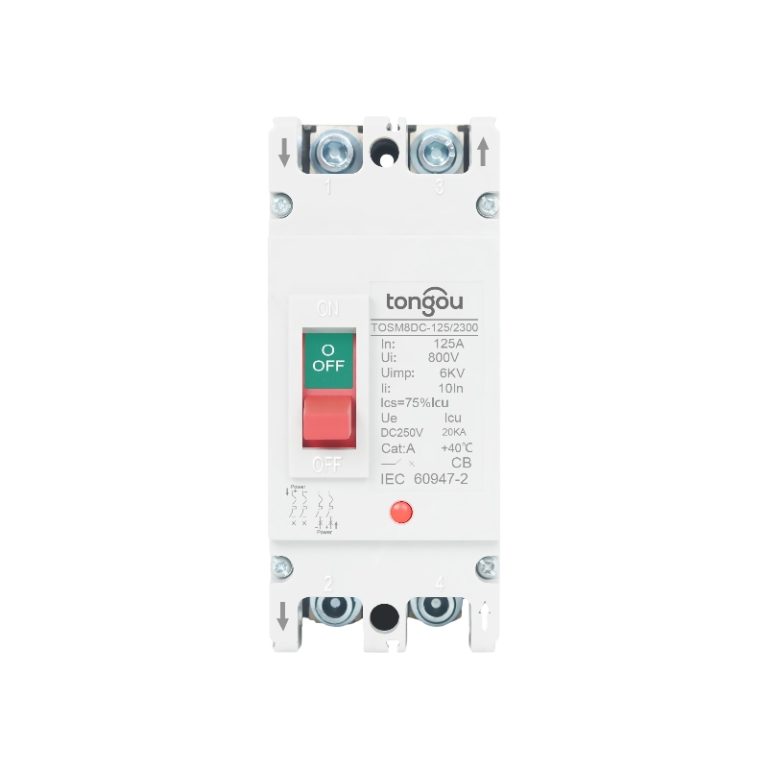
MCCB Types – according to the number of its poles
1 Pole MCCB
A 1-pole MCCB is a single-pole circuit breaker typically used in single-phase circuits. It has only one current-conducting pathway and is suitable for the protection of single-phase loads and circuits. Single-pole MCCBs are commonly found in residential and commercial electrical systems, used to protect lighting circuits and individual electrical devices.
2 Pole MCCB
A 2-pole MCCB is a double-pole circuit breaker suitable for single-phase or two-phase circuits. It has two current-conducting pathways and can be used to protect two branches in a single-phase circuit or two-phase circuit. 2-pole MCCBs are often used for the protection of branch circuits, such as air conditioning systems or distributed power sources.
3 Pole MCCB
A 3-pole MCCB has three current-conducting pathways and is designed for the protection of three-phase circuits. Three-phase circuits are commonly used in industrial and commercial electrical systems to power large equipment and motors. 3-pole MCCBs are well-suited to provide overcurrent and short-circuit protection for these circuits.
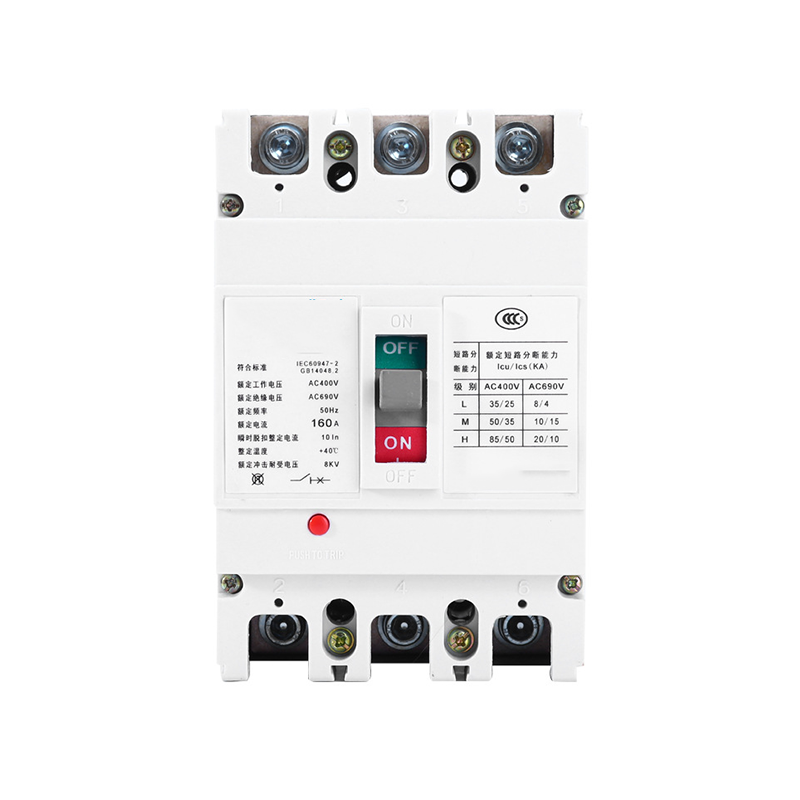
4 Pole MCCB
A 4-pole MCCB is a four-pole circuit breaker typically used for the protection of three-phase circuits and can also be applied to single-phase circuits. It has four current-conducting pathways, with two available for single-phase loads and the other two for three-phase circuits. This makes 4-pole MCCBs highly versatile and suitable for various circuit configurations.
MCCB Types – Based on the system’s number of phase
Single-Phase MCCB
Single-phase MCCBs are designed to protect single-phase circuits, which are one of the most common types of electrical systems. Single-phase circuits consist of one phase and a neutral wire and are typically used in residential, commercial, and small-scale industrial applications. Single-phase MCCBs are used to protect single-phase loads and circuits, such as lighting, outlets, and small appliances.
Three-Phase MCCB
Three-phase MCCBs are specifically designed to protect three-phase circuits. Three-phase circuits are composed of three phases and are commonly used for large industrial equipment, motors, large commercial buildings, and factories. Three-phase MCCBs provide overcurrent and short-circuit protection for three-phase loads and circuits to ensure the safety and reliability of the system.
In conclusion
Selecting the appropriate MCCB type is critical to ensuring the safety and efficiency of your electrical system. This involves understanding the specific requirements of the circuit, the characteristics of the load, and potential risks. Whether protecting residential lighting circuits or heavy industrial motors, selecting the appropriate MCCB type is a critical step in ensuring electrical safety.
In summary, there are various types of MCCBs, each designed to meet the specific needs of different applications. These devices are an important part of electrical systems, providing protection against overcurrent and helping to maintain the safety and reliability of circuits and electrical equipment.


